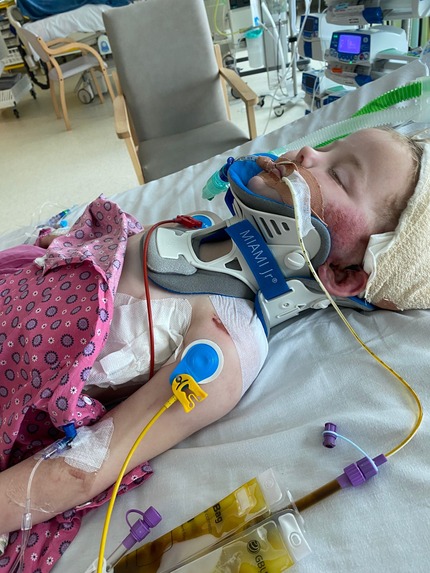The Dispatch Process
A vital part of our lifesaving service is the EMRTS Critical Care Hub (ECCH), which is based in the Welsh Ambulance Services NHS Trust Clinical Contact Centre, in Cwmbran. This is where the decision to task our teams is made.
Every 999-call made in Wales is monitored 24 hours a day by one of our critical care practitioners and a critical care allocator at the ECCH. Together, they are looking to identify patients requiring advanced critical care interventions, such as a pre-hospital anaesthetic or blood transfusion; these are patients suffering from a life or limb-threatening injury of illness.
The critical care practitioners are the same as those who work on board the helicopters and rapid response vehicle.
A variety of clues will point the team to those where early critical care intervention will potentially improve the patient’s outcome – for instance an unconscious and entrapped victim in a road traffic collision who might require blood transfusion, urgent pre-hospital anaesthesia and conveyance to a neurosurgical centre.
Less obvious but with the potential nevertheless to prevent life-changing and debilitating long-term affects might be someone who has simply fall climbing over a fence. The victim could be conscious and breathing, with injury to their lower leg. Despite being less dramatic in appearance, closer interrogation by Control Room staff could reveal complications such as an open fracture where the patient’s leg is badly deformed, and their foot is pulseless.
Through the use of technology, the clinicians now have the ability to connect to a person on scene via their mobile phone camera to determine whether the Wales Air Ambulance is required.
Have you ever wondered how we are dispatched?
This video will show you everything you need to know:

Identifying the call is only the start
The dispatch process involves alerting the most appropriate critical care team with the relevant information about the patient, for example notifying the Cardiff team that there has been a cardiac arrest in Newport. The team responding will then confirm to those on the hub whether they will attend by air or by road.
If attending by air, the team receive a grid reference, or for missions by road they receive a postcode. For an air response, although the pilot and team will decide on a landing site once overhead, there are often precautions to take. This includes alerting the police and others at scene that a helicopter is responding, giving safety advice to civilians on the ground, and advising other agencies of dispatch to avoid “confliction” (with other aircraft such as Search and Rescue who might be in the area).
At times, it might be necessary to arrange for the team to be met at a landing site and conveyed to the scene, or we might need to arrange an emergency road closure to allow a carriageway landing.
During the mission the clinicians at the hub record timings, called over the air by the teams, arrange logistical support both at scene and at the receiving hospital as appropriate, and conference call medical teams on scene with receiving hospitals and sometimes the Top Cover Consultant to advise of, or decide upon, appropriate treatment and disposition. The service may have all its aircraft at separate concurrent incidents, or occasionally the same one, so the team are continuously reviewing multiple taskings at a time whilst also monitoring 999 calls.

The Process
The nine steps below outline the typical decision making and approach adopted by the Critical Care Hub when dispatching a Wales Air Ambulance helicopter or rapid response vehicle to an incident.

999 call

Monitoring

Listening

Logistics

Location

Air or road

Interrogate

Update

Outcome

999 call

Monitoring

Listening

Logistics

Location

Air or road

Interrogate

Update

Outcome

999 call

Monitoring

Listening

Logistics

Location

Air or road

Interrogate

Update

Outcome

Typical incidents
There are two different dispatch options for the clinicians on the hub – immediate and interrogated.
Immediate
Immediate dispatch is when an incident or illness indicates a high probability that the patient will require advanced care, such as falls from height, stabbings, ejection from a vehicle, the amputation of a limb or paediatric cardiac arrests.
Interrogated
Interrogated dispatch is when the critical care practitioner listens into a call to find out more information or when they go through set questions with the 999 callers. WAST can also sometimes identify that further skills are required, leading to the dispatch of our team. Examples of interrogated dispatch include equestrian injuries, industrial or agricultural incidents, severe haemorrhage, and cardiac arrests.
“Thinking as the clinician, I am trying to put myself in the shoes of the CCP that is responding to the incident and thinking what they would want, what they would need at whatever incident they are attended.”
We are the gatekeepers in communication.
Corey Mead, Critical Care Practitioner.

Meet some of our patients


